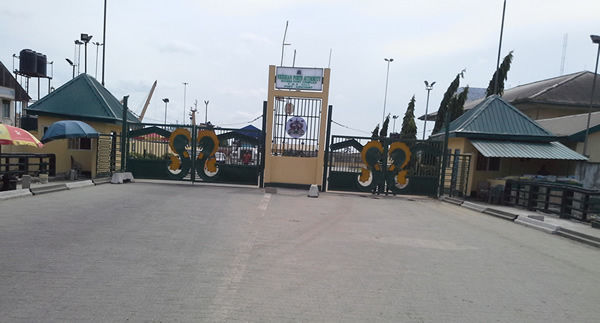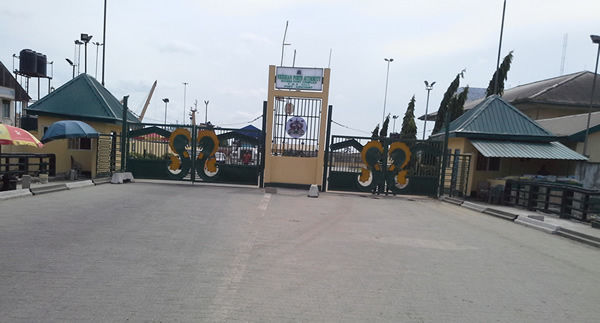Rivers Port is located in the Gulf of Guinea. It is strategically positioned, which helps to enhance quick realisation of government core economic objective and aspirations through reduction of distribution cost.
The economic activities in the Eastern part od the country started with the discovery of coal in commercial quantity in Enugu, South East of Nigeria. This necessitated the exportation of the mineral resources and thus paving way for the establishment of the seaport, in Port-Harcourt.
It is important to note that this feat of setting up a seaport also encouraged the building and completion of the railway line in Enugu which terminated at the Port-Harcourt seaport.
Thus by 1913, operation at vthe new port took off in earnest, having been commissioned by Lord Fredrick Lugard. Rivers Port is among the first old-generation port like Apapa Port. There are other set of ports that were built within the frame work of third national economic development plan of 1975 through 1980. For example, Sapele, Warri New Port, Tin-Can Port, Calabar Ports and Rivers Port Complex. These ports were unique in so many ramifications. They were multi-purpose port with greater inclination in the handling to break bulk cargo, liquid bulk, refined petroleum, oil tank farms and a cement factory.
Rivers Port as the oldest port East of Nigeria went through a lot of man-made and natural storms like the Civil War. But despite the storm, it continued to operate, handling both containers and bulk liquid cargo.
As at the time, Intels and Maersk Line were operating at Rivers Port, but later relocated to Onne Port. By the thinking of Federal Government of Nigeria, they consider it appropriate to make all the seaports more efficient. This was part of the reasons that informed the privatisation policy that came into effect in 2006.
No doubt, the concession policy and its terms were clearly spelt out between the Federal Government and the concessionaires. Even at this, the Nigerian Ports Authority (NPA) was 100 per cent responsible for managing the ports – covering infrastructural development, vessel/cargo handling etc. However, with concession regime, which took effect from 2006, the concession became part of the agreement, and subsequently took over infrastructural development, terminal development, cargo and vessel handling etc. The role of Nigerian Ports Authority in all of this took over the supervision and provision of services.
There are two existing concessionaires operating in Port-Harcourt Port. They include Ports and Terminals Operators Nigeria Limited (PTOL), and BUA Terminal Limited. Each of them has, however, lived up to its expectation in their contract terms in the area of reconstruction or rebuilding their facilities.
BUA Terminal Limited in line with their contractual agreement took charge of Terminal B, comprising berths 5 – 8, with a total length of 559 metres and a storage/stacking area for storage and stacking of cargoes. The terminal has 15,000 square metres of stacking area with a spacious trailer park. The terminal also has two warehouses measuring about 4,000 suare metre for storage of cargo and pipeline connected to tank farms at Abonema for discarging of bulk liquid cargoes.
Since 2006, activities at Rivers Port increased tremendously, involving BUA which handled over 757 vessels with a cumulative tonnage of over 5,662,393.84 metric tons with well over twenty clients.
BUA operations, do doubt have experienced massive boost in traffic over the years, operating 24 hours/7days a week. It embarked on construction of all its berths, building of flour mills, sugar refinery, salt, rice, its perimetre fencing. Her heavy duty cargo handlers have handled over 6.5 metric tons of cargo since it commenced operation.
Rivers Port is also receiving massive facelift alongside a high volume of activities. PTOL as a concessionaire, since it started at Rivers Port has undergone reconstruction of its terminals. Thus it maintains a total length of about 650 metres, designed terminals that handle general cargo and containers.
PTOL at Rivers Port has also completed rehabilitation/reconstruction of berths 1 – 3, and has also achieved reasonable draught of about 8.5 metres. About 10.5 metres will ultimately be achieved after dredging, which has since commenced from the entrance channel to other critical infrastructures, which gave birth to a new port.
On areas of physical infrastructures embarked upon by Rivers Port, they embarked on some projects like Visual Personnel Network (VPN) to access information to/fro the corporate headquarter is installed; electrical high tension network is also installed.
Existing craft are maintained regularly, rehabilitating berths 1, 2, and 3 which are 90.74 per cent completed. The port is also witnessing the rehabilitation of road and water distribution network (74 per cent completed); rehabilitation of fenders at the quay apron is in progress, while preliminary underwater survey of sheet/concrete pile and bulk for wave in on going.
Since the Federal Government policy of 30 per cent levy on wheat and the importation ban of cement etc the concessionaires now shifted their operations to backward integration.
The port is a modest port with the traditional ways of handling cargo. It has eight berths and 47 jetties. Its notable characteristics reflect the state of the terrain it operates. Amongst the jetties, two are key and strategic. They are the Bonny and Okrika jetties.
In the Bonny operation, the traffic is shared between Onne and Port-Harcourt, while Okrika Terminal handles refined petroleum products like AGO, refined fuels, kero etc. Also Rivers Port, as designated port, operates tank farms that house imported petroleum products. Instead of operational activities being sited in the quays, they do so at the tank farm areas. The concessionaires also have shifted their operations to backward integration.
The services at the port had continued to change with time. Today, there are major shift in the exportation of crude and importation of finished petroleum products. The port provides services and other logistics support to these oil and gas sectors, thereby meeting the target of the Federal Government aspiration to fully transform marine operation in Nigeria.
There is no doubt that Rivers Port has done a lot to improve the economic growth and development of the country. They account for 10 per cent of the business activities in cargo portfolio in stakeholders, where finished products are brought into the country.
Also, there have been shift upwards in businesses presently, than before. Now there are new frontiers being created and exploited. The operational activities now are better off. There are no more vehicular and human traffic. Doctworkers are now being bussed in and out in the wharf. Ships that come on commercial merchandise (i.e. sugar, salt, rice etc) are no longer coming like before, as a result of some government polices.
The point of emphasis is that there is a mild shift, just like the experience of other ports. It is not that the port is not busy or that there is a shift from one port location to another, but that the experiences should be attributable to the decision of the government to shift focus to other activities expected to generate local employment.
Oil and gas sector is growing. New licenses and projects are spring forth. There are so much investments going into it. Foreign and direct investments are going into that sector.
Rivers Port is still very relevant in the scheme of economic activities sustaining the economy of the country. Thus, the port is yielding great revenue to the country, performing its roles and its mandates satisfactorily.
Mrs. Nchey-Achukwu is Chief Port Public Affairs Officer, Rivers Port Complex, Port–Harcourt, Rivers State.
Copyright Ships & Ports Ltd. Permission to use quotations from this article is granted subject to appropriate credit given to www.shipsandports.com.ng as the source.


